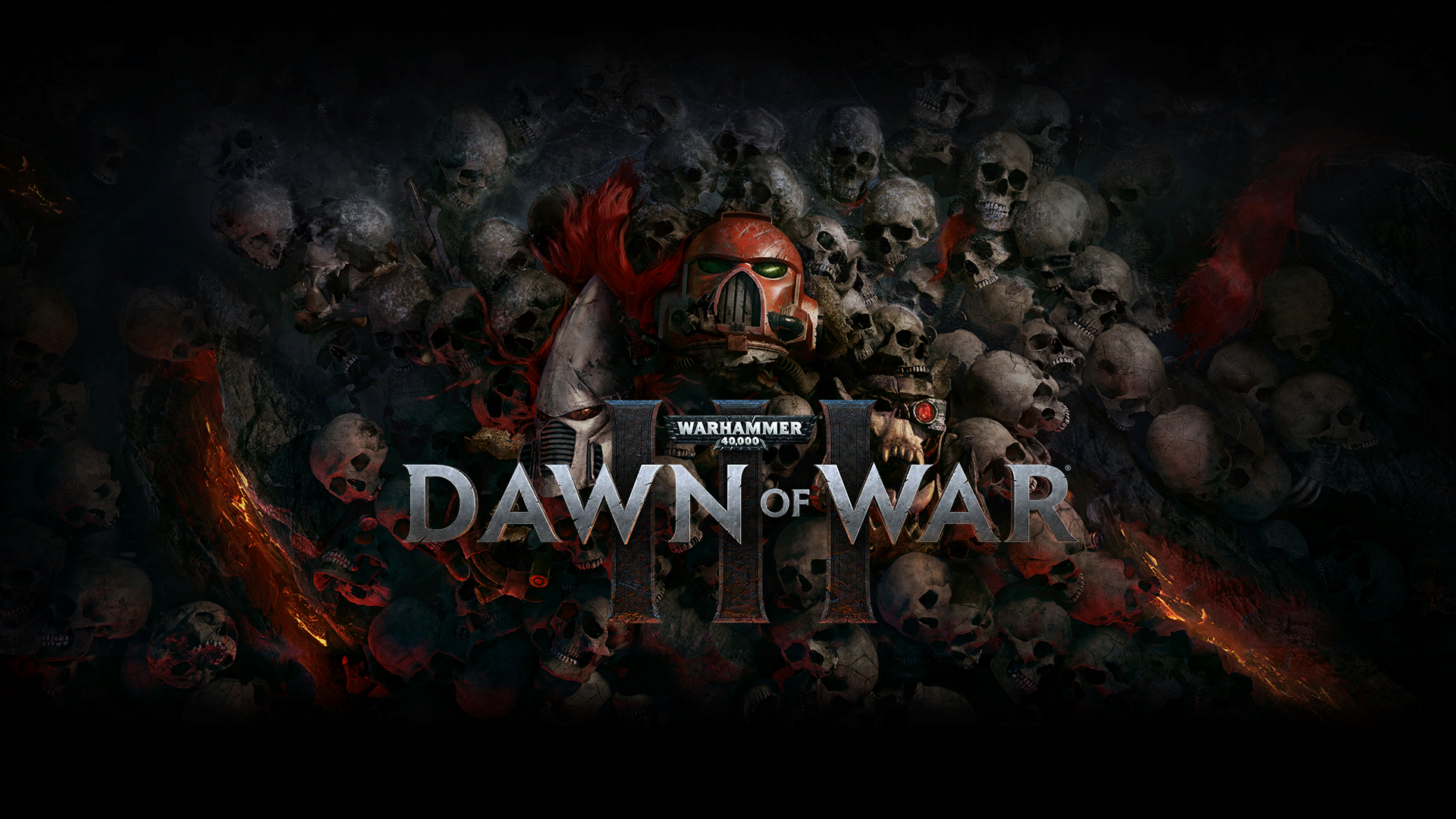War looms on the horizon as a mysterious planet warps into existence. The planet holds the promise of conveying an ancient artifact that can change the balance of power in the universe forever!
Type: Single-player, Multi-player
Genre: Violent, Gore, Action,
Simulation, Strategy
Developer: Relic Entertainment
Publisher: SEGA
Release Date: 27 Apr, 2017


Introduction
Most reviews of this game that I have seen so far have spent a great deal of time comparing it to the previous ones in the series. That is all well and good but what about people who have never played a Dawn of War game before? Knowing that it does something better or worse than the previous games doesn’t help all that much if you have never played them before. Therefore, this review will try to be accessible to everyone with as few comments about the previous games as possible.
Warhammer 40,000: Dawn of War III is a Tactical Real-Time Strategy game from Relic Entertainment. You might know of them from previous Dawn of War games or from their Company of Heroes series. Dawn of War III borrows elements from both of those series so if you have played either of them you should feel pretty much right at home with Dawn of War III. First and Foremost, I am very happy to say that base building plays a fairly significant role in Dawn of War III, unlike Dawn of War II where it was almost totally removed. I’ve heard both sides of the argument for and against base building in RTS games, but I am absolutely entrenched into the base builder’s camp. Before the original Dawn of War, Command & Conquer was one of my favourite Real-Time Strategy games. It remained that way until Command & Conquer 4 came out entirely lacking the base building element which in my opinion completely destroyed the foundation the series was built on. Since there hasn’t been another Command & Conquer game since then, I’m guessing I’m not alone in feeling this way! It was at this time a friend introduced me to Dawn of War II. The first thing that happened after I started playing it is that I complained that it lacked the base building elements that I felt were really important in a proper RTS game. I pressed on and soon discovered the wonderful story telling and gameplay that is in the Dawn of War series. I went back in time at that point and played the original Dawn of War and discovered my beloved base building was alive and well there and then proceeded on to play every expansion available. I deliberately avoided spoilers for Dawn of War III, so it was a very pleasant surprise when the Tutorial introduced that the base building concept was back in full force for Dawn of War III.
Game Engine Video
Gameplay
Dawn of War III pits three factions against each other: The Humans, the Orks and the Eldar. However, rather than making you pick a faction to play as for the campaign, the campaign shifts between the three factions automatically as the story progresses giving you a much fuller picture of what it is going on from each of the faction’s points of view. All of the factions have the same basic ultimate goal, to ensure the artifact doesn’t fall into the control of their enemies. Let’s talk a little about each of the factions just to paint you a picture if you are unfamiliar with them. First off, let’s talk about the Humans. The Humans are led by their beloved Emperor. The faction itself is more or less just highly skilled humans using machines and power armor in the future. It’s the most vanilla of all the available races. The Orks on the other hand are much more primitive, enjoy combat for sport and lack anything that could be considered as sophisticated technology. The Orks are, however, quite clever in their own right with their ability to cobble together machinery and power ups out of the various bits of scrap metal lying around the battlefields. The last race we will discuss is the Eldar. The Eldar are your typical far advanced Alien race type species. They use technology that is far more innovative than any of the other races. Each race has something that makes them unique. The Orks, as mentioned, collect scrap from around the battlefield to enhance themselves. The Eldar have the ability to warp their buildings around the battlefield which also doubles as a fast travel network for their units. The humans have the ability to use drop pods to quickly land units onto the front lines.
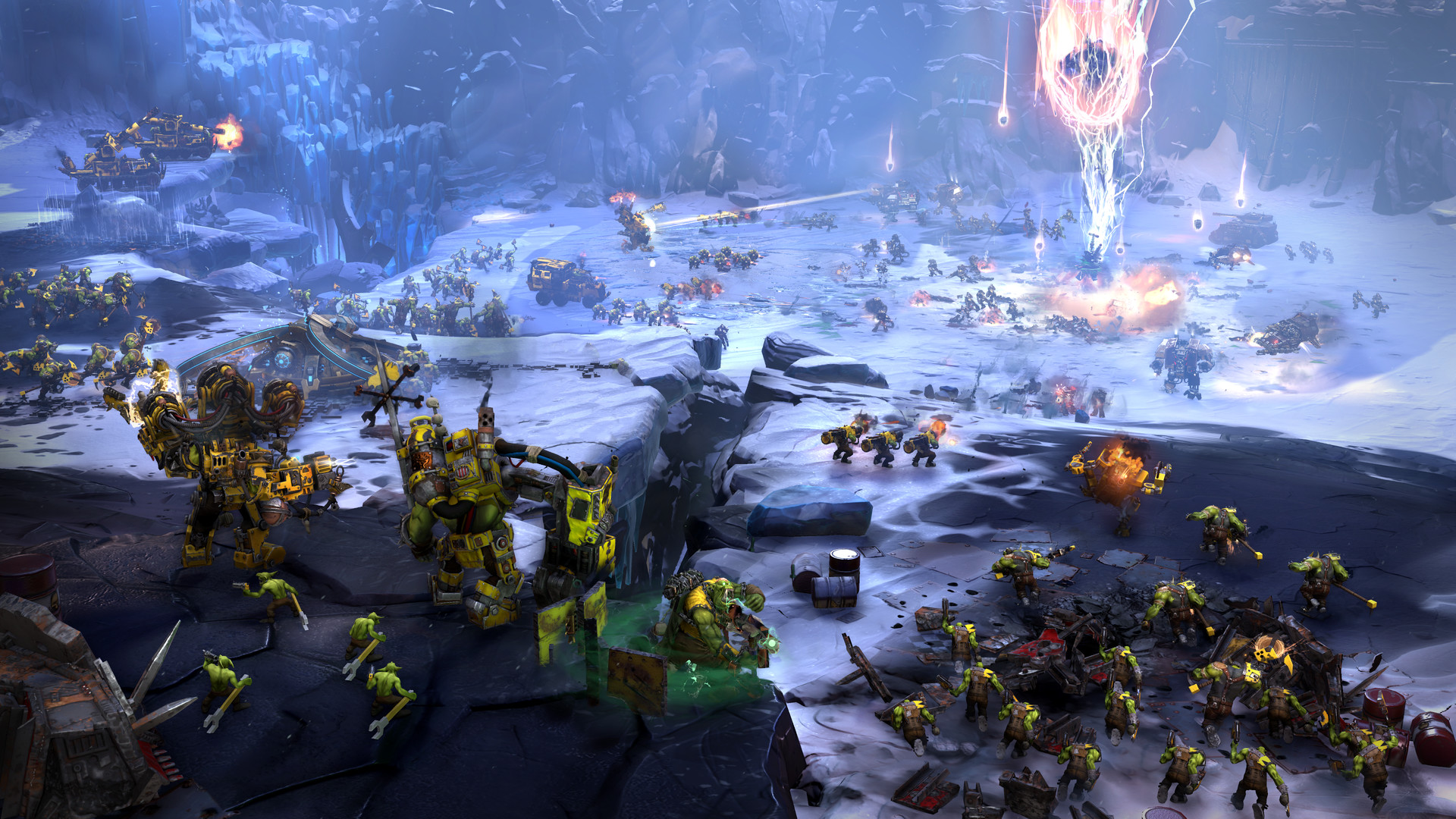
Each faction has a collection of Elite units available at their disposal. These units can typically be selected prior to the mission you are embarking on unless the mission isn’t following the standard format. For the most part, the selection of which Elites you want to take with you into battle is purely based on your own personal preference. Using Elites in battle will earn that particular Elite experience points that are used to unlock new skills, skins or additional Skulls. Skulls are a currency used to unlock new Elites as well as other game changing effects/modifications to the core gameplay. For example, you can use Skulls to purchase an ability that gives a building that couldn’t previously heal your units, the ability to automatically heal the appropriate units when they are nearby and out of combat. A very useful ability for it to have! Elites also have the handy ability that if you unlocked them by spending your Elite Points (points that are automatically gained slowly over time during a mission) to summon them, if they fall in combat you can freely respawn them once their cool down period expires for no extra charge. You can’t really abuse this feature too much though because each time they fall in combat, their cool down period is extended. Elites generally have both a passive ability and a manual ability. Their manual ability is often quite useful so you really need to ensure you use them effectively.
Stepping away from the Elites, let’s talk about the basic units. Rather than focusing on any one faction first let’s talk in a more generic sense. There are a lot of units in this game. If I was to have a breakdown of every single one or type, this review would likely be far longer, so let’s keep it simple. It’s basically a grand scale rock-paper-scissors match like you would typically expect to find in a proper Real-Time Strategy game. Units are typically strong versus some units and weak to others. Knowing this balance can let you win a battle even if the enemy has superior forces to you. Another interesting feature is the fact that for infantry, you are typically not dealing with a single unit; rather you are dealing with a squad of units. While a single squad will always move together, they don’t all die together. As the squad takes damage some of the individual soldiers in the squad will perish. If you are even slightly decent at micromanagement, which hopefully you are if you intend to be using the various unit’s special abilities, you can actually have the injured squad run back to your base to regroup. If you are able to rescue even a single member of an injured squad, you can reinforce it back up to full strength for less than it would cost to simply create a new squad. Some units can pass over gaps/walls/debris that ground based units either have to walk around or if they have the ability, need to teleport across. This can be both a blessing and a curse. If you are planning on sending a massive wave of units to take out a particularly heavily entrenched enemy, you might find yourself accidentally giving yourself away when your higher speed, squishier flying units crash through the enemy gates and summarily get taken out by their forces before the rest of your units can catch up. Luckily you can manually save the game any time you want so if you plan goes poorly in the campaign you can always just reload.
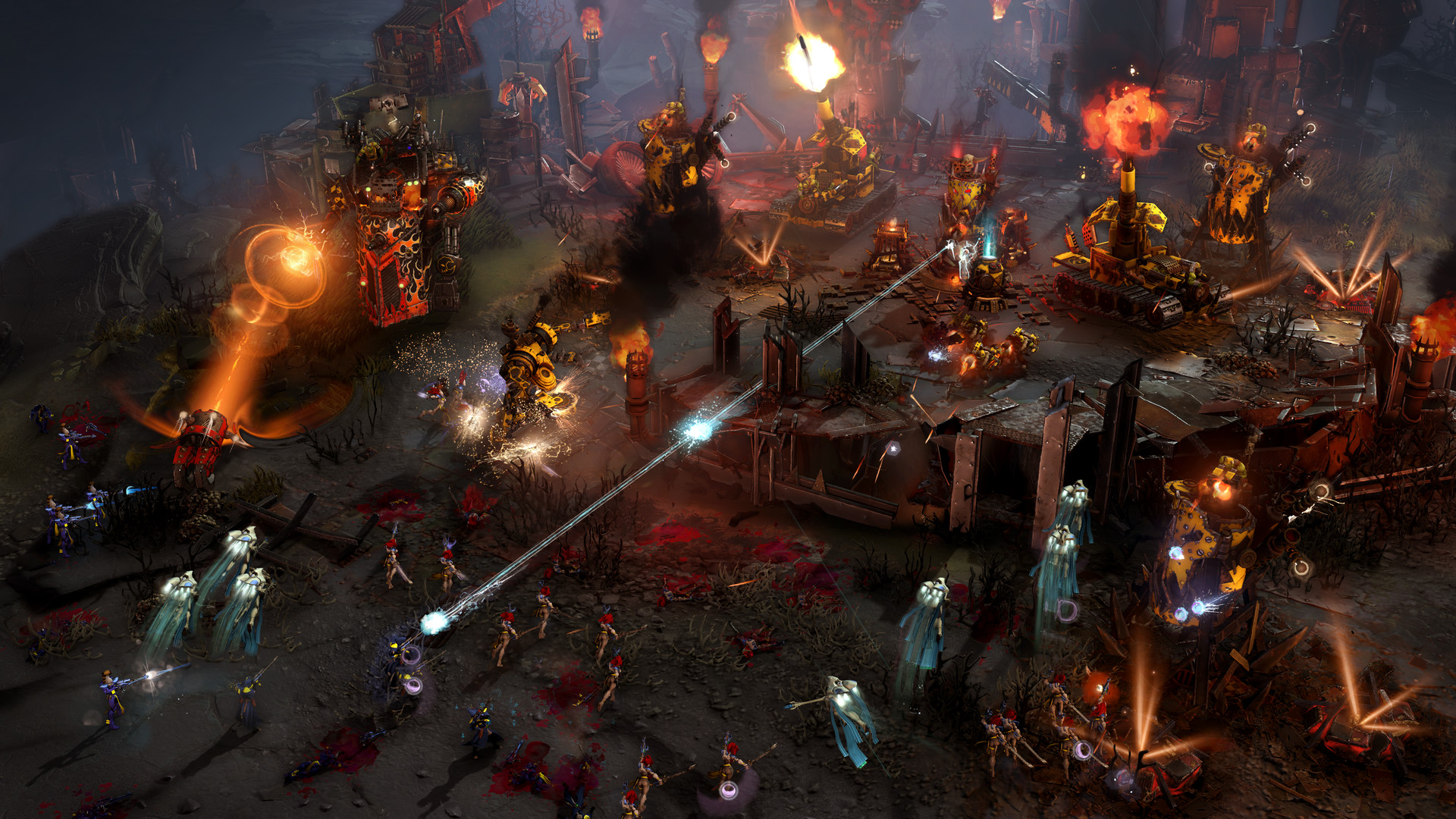
Since I just mentioned saving, one complaint I do have is that at this time there are no in-mission auto-saves. If you are particularly engrossed in the game you might shut off that part of your brain that says to be cautious and that you should be saving more often. This will invariably lead to your own untimely destruction. Going to reload your latest save makes you realize that you have not saved at all in the past hour… well scrap. Another complaint I have is…
[SIGNAL LOST]
[SEARCHING FOR CONNECTION: ESTABLISHING]
Gretchin: “Is this thing on, I think it’s on, Hello Hummies”
Gorgutz: “Give me that”
[static, muffle voices]
Gorgutz: “Fellow humans, we are at war! The Eldar are trying to take what is rightfully mine because I claimed it first! I mean rightfully ours!” [muffled sounds] “Err, right, the Emperors, it’s rightfully the Emperors. Yes that’s it. We need your help! Send all your scrap to Gorgutz” [Gretchin: “You mean Emperor again boss”] “for… err… ah… send all your Scrap to the Emperor care of Gorgutz and we will see that no one can stand in the way of our mighty Ork WAAAGH! I mean err… the Emperor and um the …”
[SIGNAL LOST]
[REESTABLISHING CONNECTION]
… and that about sums up all the little nitpicks I have about the game. If you look past those issues than Dawn of War III is a fantastic addition to the Dawn of War family.
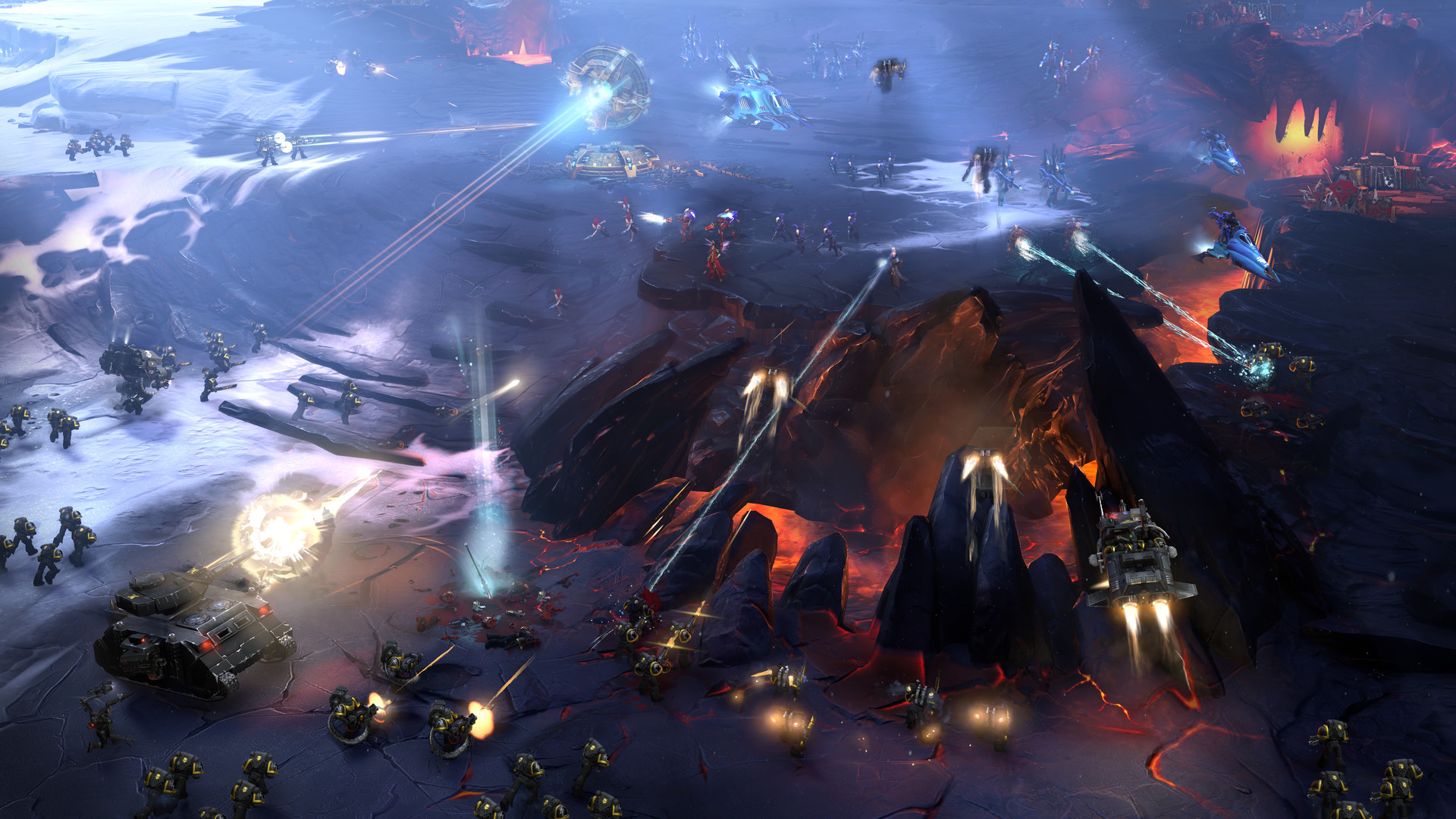
Let’s turn our attention to the heart of any true Real-Time Strategy game: The base building! One thing you will often find when there are base building elements in RTS games is the artificially imposed limits. You may require more Pylons, farms or other buildings that need stuffed around your base in order to produce additional units. The unit cap in Dawn of War III isn’t really that big of a hindrance or limitation as it is so high that I have only ever hit it once. Not having to build all those extra resource and space wasting buildings means that you can have yourself a nice lean base with just the buildings you actually need and focus more on the actual game play. Another thing that Dawn of War III does differently is that it removes the necessity to build new buildings near your other buildings or on special surfaces. This means that you can place your new buildings pretty much anywhere you feel like it. If you wanted you could build yourself a forward base consisting of unit construction buildings just outside of the enemy gates giving you a steady stream of straight to the front lines reinforcements and a place to fall back to if any of your squads or Elites get in too much trouble. There are other things I could comment about the base building, but I would like to leave something for you to experience on your own. I’ll just say that the base building is done pretty much right in this game, and that I am glad to see its triumphant return after being removed from the original Dawn of War II release.
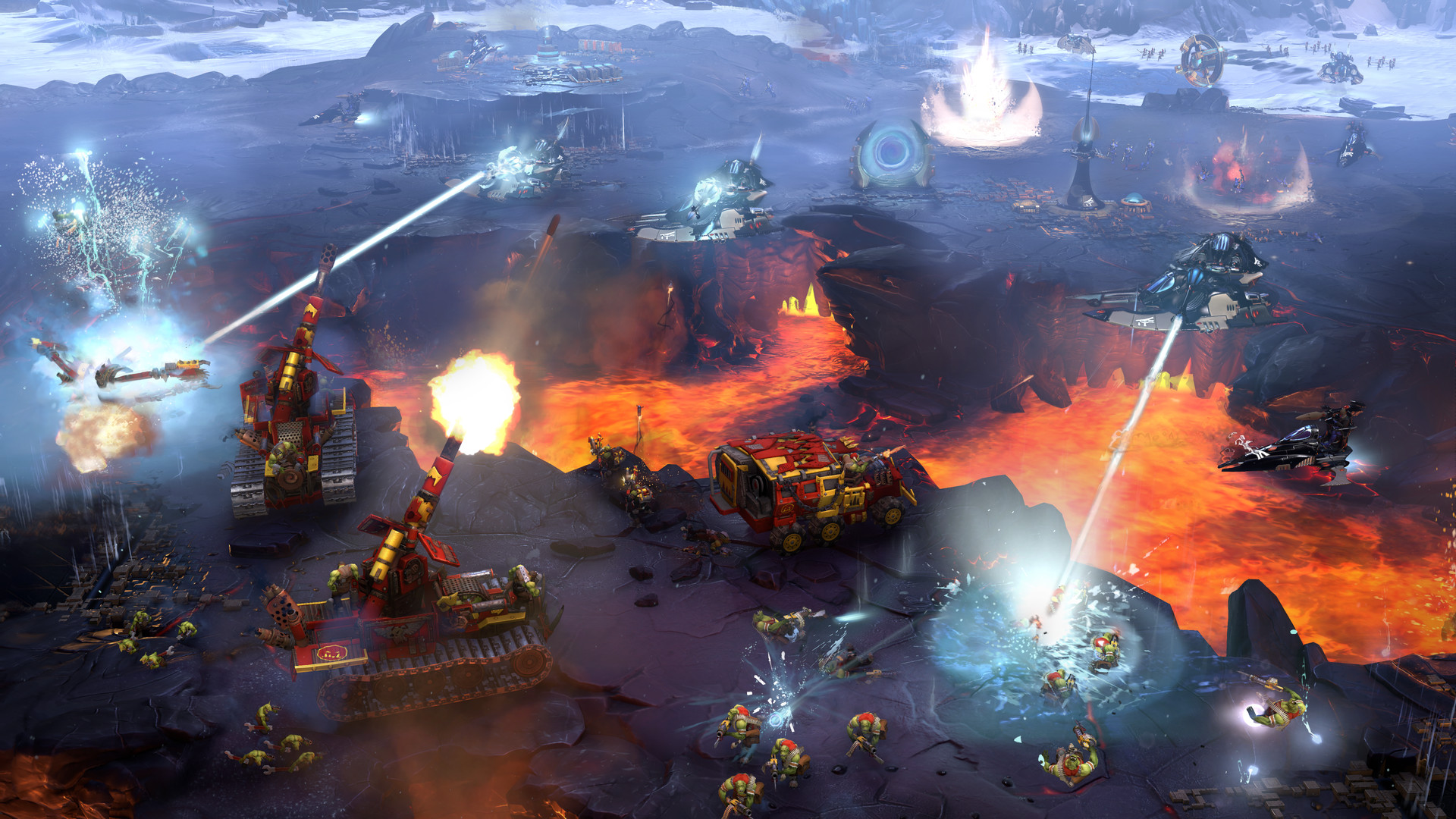
Let’s talk a little more about the gameplay before we move on. Are you good at micromanagement? Are you someone who has keen eye for detail and have the ability to quickly shift your focus all across the battlefield? Are you able to ensure each of your unit types is attacking what they are strong against and protecting them from what they are weak against? Good at noticing failing health and issuing a tactical retreat while at the same time also moving new units to provide cover for their retreat? Are you the kind of player that if you lose even a single unit is prone to reload and try again just to avoid the Damage Per Second drop? I know I’m not! I’m more of a Zapp Brannigan type Field Commander. I typically just set everything into a single control group and hope for the best as they use their default and auto-abilities while completely ignoring their manual ones. Turtle Power, overwhelming the enemy by sheer numbers! Well that’s doesn’t exactly work well in Dawn of War III I have to admit. Also, my good old faithful tactic of just building a large army of the cheapest units and rolling my massive “Bioball” through the enemy’s gates fails me here as well. I have to say that despite the fact that my trusty and admittedly lazy tactics have failed me, I have found the micromanagement more fun in Dawn of War III than I have found it in other RTS games. Careful use of the manual ability can really change the tide of battle!
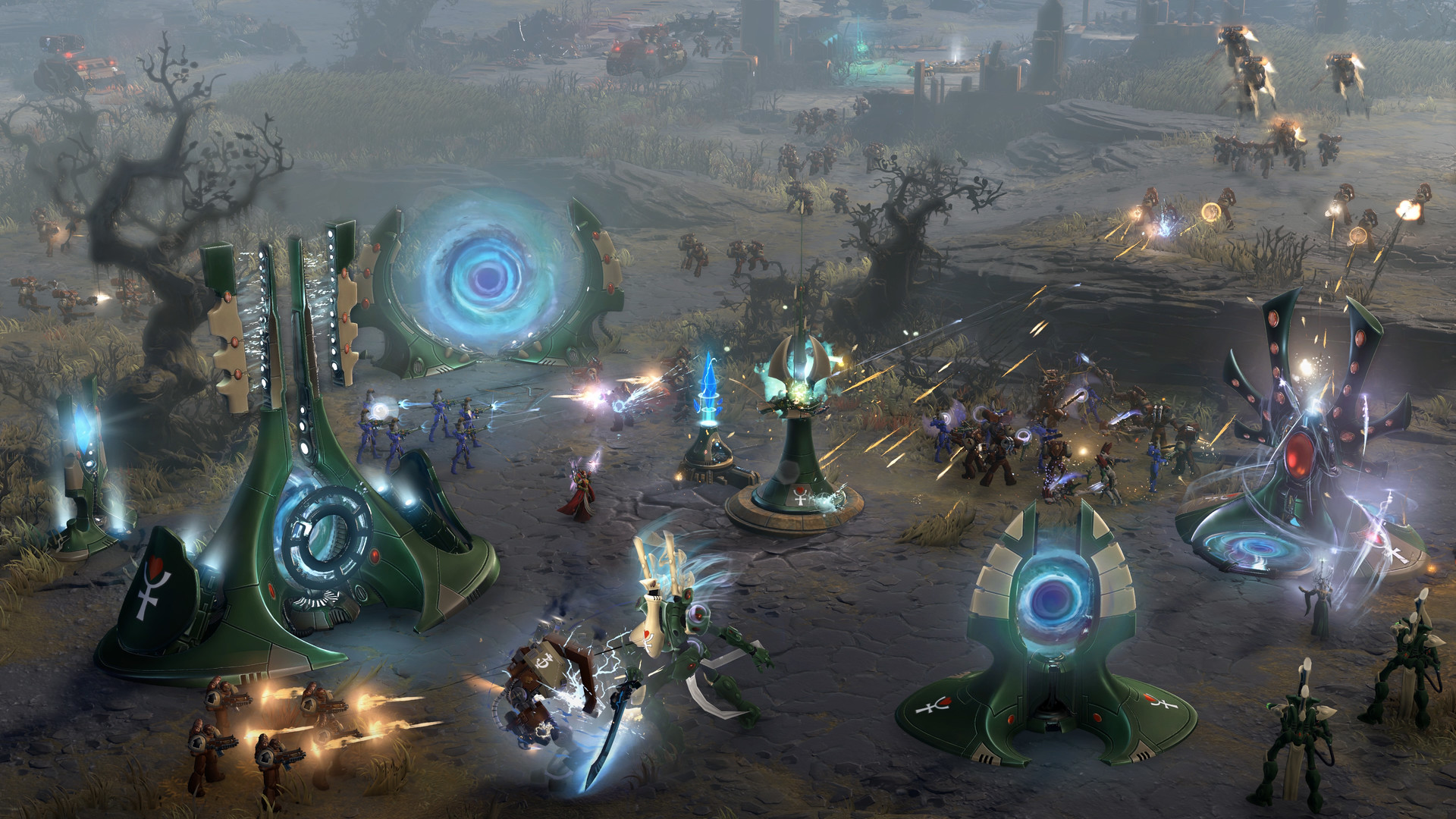
Usually I avoid talking about the story of a game due to not wanting to spoil anything; however, I would like to take a moment to talk about how it is delivered. As mentioned, the game switches between the factions as you progress through the campaign. Each mission directly follows the previous mission and they are knit together quite well. It is an excellent way to tell the story rather than the typical shared story of other RTS games where you pick a faction and see only their side and from their perspective until you decide to play another faction (if it is even available). I have to admit, while playing, I chose a faction that I wanted to see be the winners of the three-way conflict just because of how charming and charismatic their leader is and how much fun their units are as well. The Orks! I have to say when I first met them again in Dawn of War III, I instantly took a liking to Gorgutz, his rag-tag bunch of “Boyz” and their poorly constructed and likely to explode at any moment buildings and machines. It always made me happy when one of their missions came up. Getting back to the topic at hand, the story delivery. Prior to each mission there is an introduction to what is happening that triggers the upcoming mission. It is delivered via text boxes being read to you by a portrait of the person who is stating it. At the side of the screen there are additional story elements available for you to view if you are interested that follow the same format. During a mission, there is a quick introduction that recaps mostly what you are there for and that is supplemented further with short snippets of dialogue. The short dialogues occur whenever the map transitions to a new phase such as when you reach a target objective. After you complete all of the objects there is typically a quick outro as the game switches from the game map back to the menu. Once at the menu, there is another discussion similar to the mission briefing prior to the launch of the mission. Occasionally an action filled cutscene video will play to help progress the story as well. I have to say this delivery method really works well for this type of genre. Most games have the introductions prior to the mission but not nearly as many have the post-mission debriefing. I have to say I really liked that element of it.
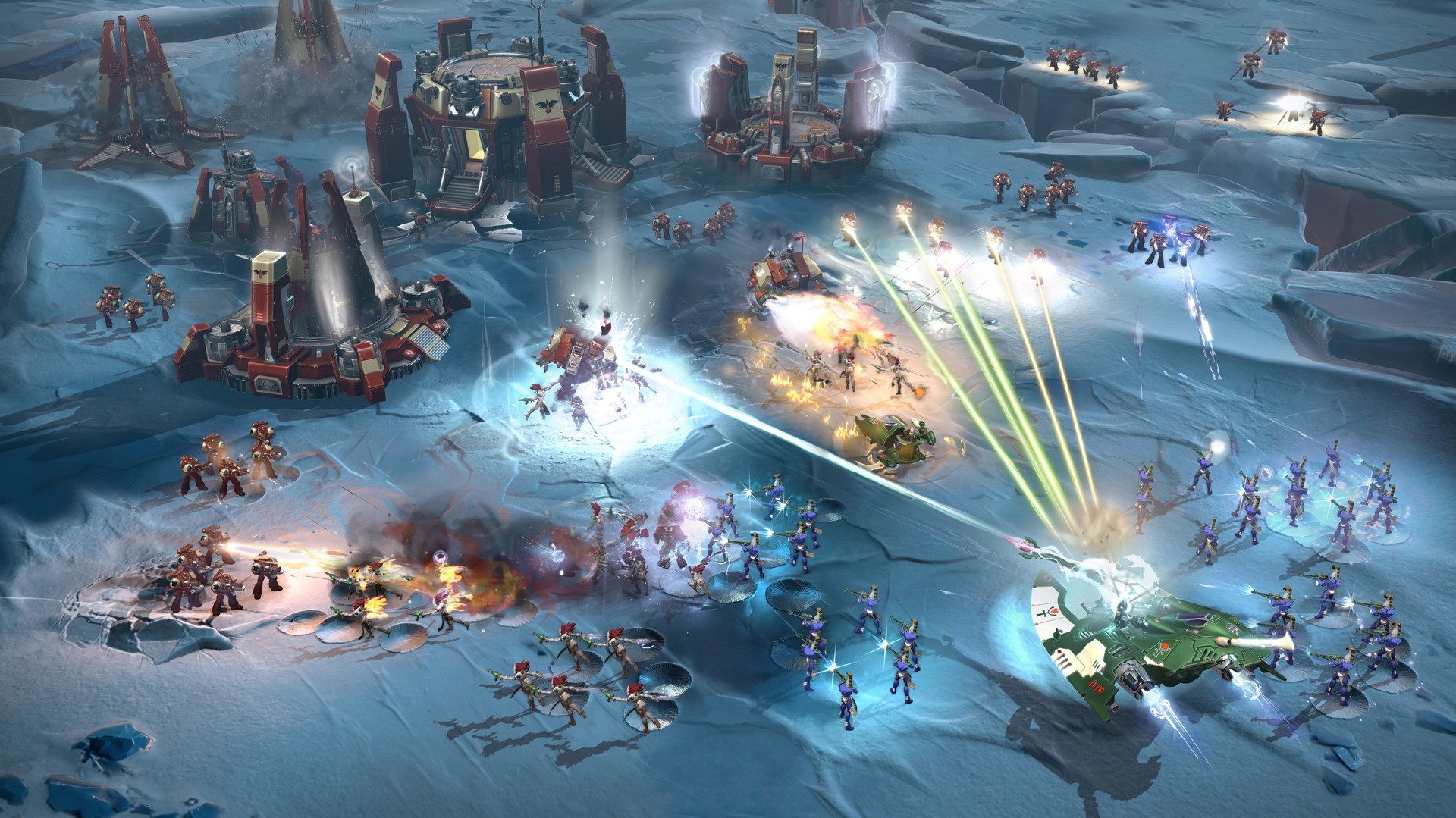
There are different difficulty modes available to you depending on your skill level. Being an egotistical “RTS Veteran” I naturally set it to the hardest difficulty when I first launched the game. That admittedly was a bit of a mistake as I quickly found myself being overwhelmed. I pressed on, paying dearly for each mission objective I managed to conquer. I went back and tried normal and easy and found even normal offered a decent amount of challenge if you were not willing to micromanage your troops effectively. Easy was just that, it pretty much lets you get away with just throwing everything at the enemy and letting them sort it out themselves.
Once you are finished the Campaign, or if you just tire of fighting the AI, you can take the game online and play it multiplayer. I have to say, it’s definitely an interesting experience online. It changes up the core gameplay a bit from how it is done in single player. Now you must take out key structures in order to achieve victory in a kind of Massive Online Battle Arena meets Real-Time Strategy style game. It is up to you and any allies you may have to defend your key structures while attempting to take out your enemy ones. The structures need to be taken out in a specific order in order to achieve victory effectively. With the ability to mass recall your troops, you are able to fairly quickly pull your army back if you happened to get flanked while attempting to destroy your enemy. Other than the key structures in addition to your standard base, the game play is similar to how it is offline. The more you play through the campaign and hone your skills the better you will likely do when playing the game online. However, actual living players are often much more ruthless than the AI, so be prepared for a huge difficulty spike if you have been breezing your way through the game on easy!
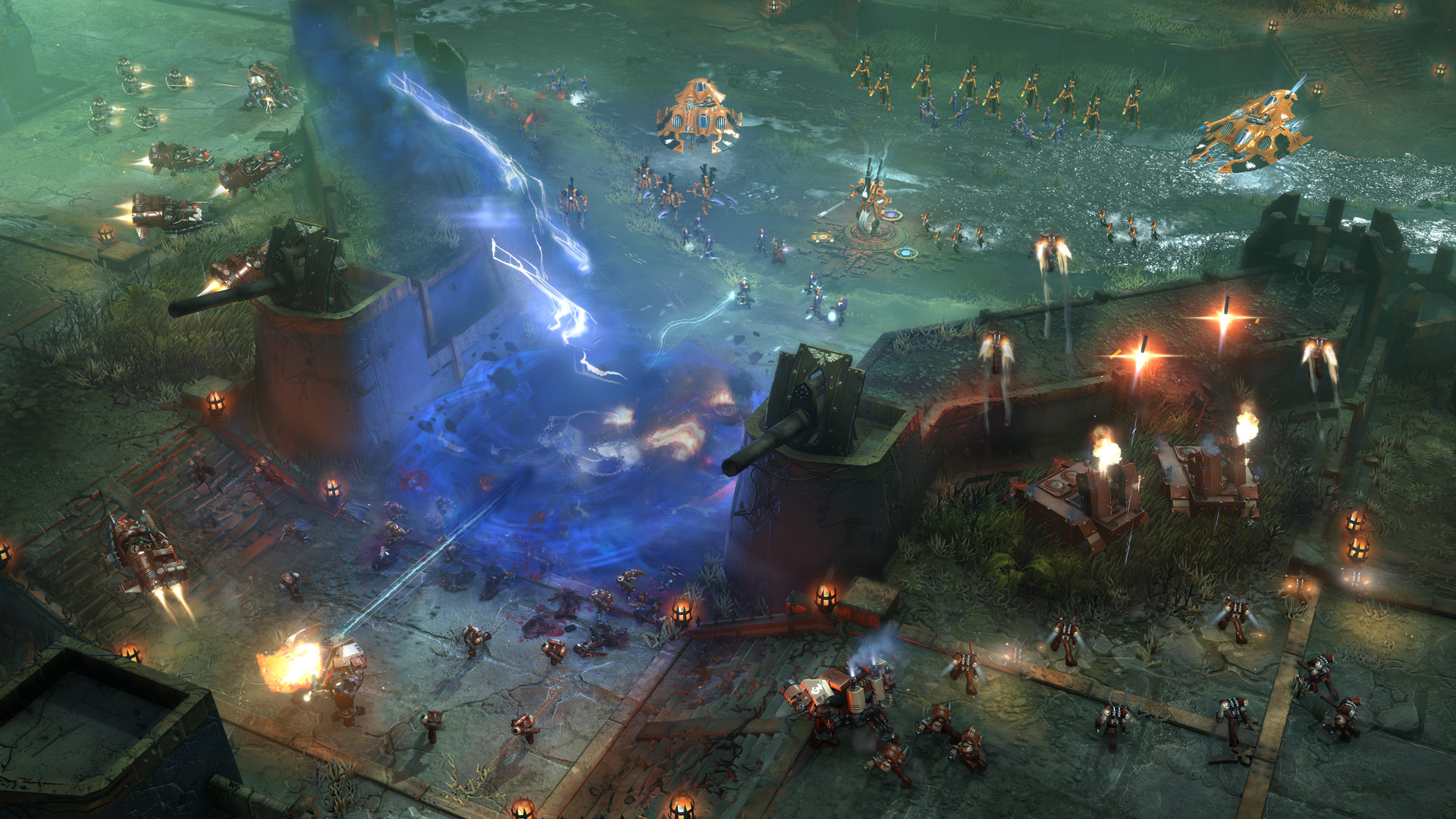
Graphically, this game looks fantastic for a Real-Time Strategy game. My computer is admittedly on the older side, and I was able to play it maxed out despite not quite being at the recommended settings on the Steam store page, but easily beating the minimum requirements. There is enough detail in this game, even on the individual units, that it truly feels like a Warhammer game and not just another generic RTS game. I really enjoyed how different some of the Elites looked. It isn’t just reskins of the same generic elite unit with their abilities changed. A really good example is Gorgutz, he has a massive mechanical claw on one side of his body, and you can tell by the way he walks that it must be very heavy as it throws off his balance as moves. There is enough variation between the buildings for each of the factions. Despite serving similar functions, they too feel like they are their own unique creation. Without seeing a unit, you can easily tell whose base you just encountered just because of what the buildings look like. Futuristic and spacy for the Eldar, primitive and poorly cobbled together for the Orks, industrial and boxy for the Humans. Even the maps themselves look nice and have enough extra bits of detail scattered around to make them enjoyable to explore.
The English voice acting in this game is really spot on. It isn’t in the least bit difficult to envision that the person speaking the lines is the character you see on the screen and not just some voice actor in a studio. The Orks all sound exactly what you would think they would sound like. The humans of course sound normal, and the ancient Eldar sound, well like humans but more full of themselves, sort of like what you would come to expect from a “superior” being. The soundtrack really helps draw you into the action and the sound effects work really well. The Ork WAAAGH! Towers are particularly amusing and intimidating when they pop open and start playing their Rock music to inspire their forces and intimidate their foes.
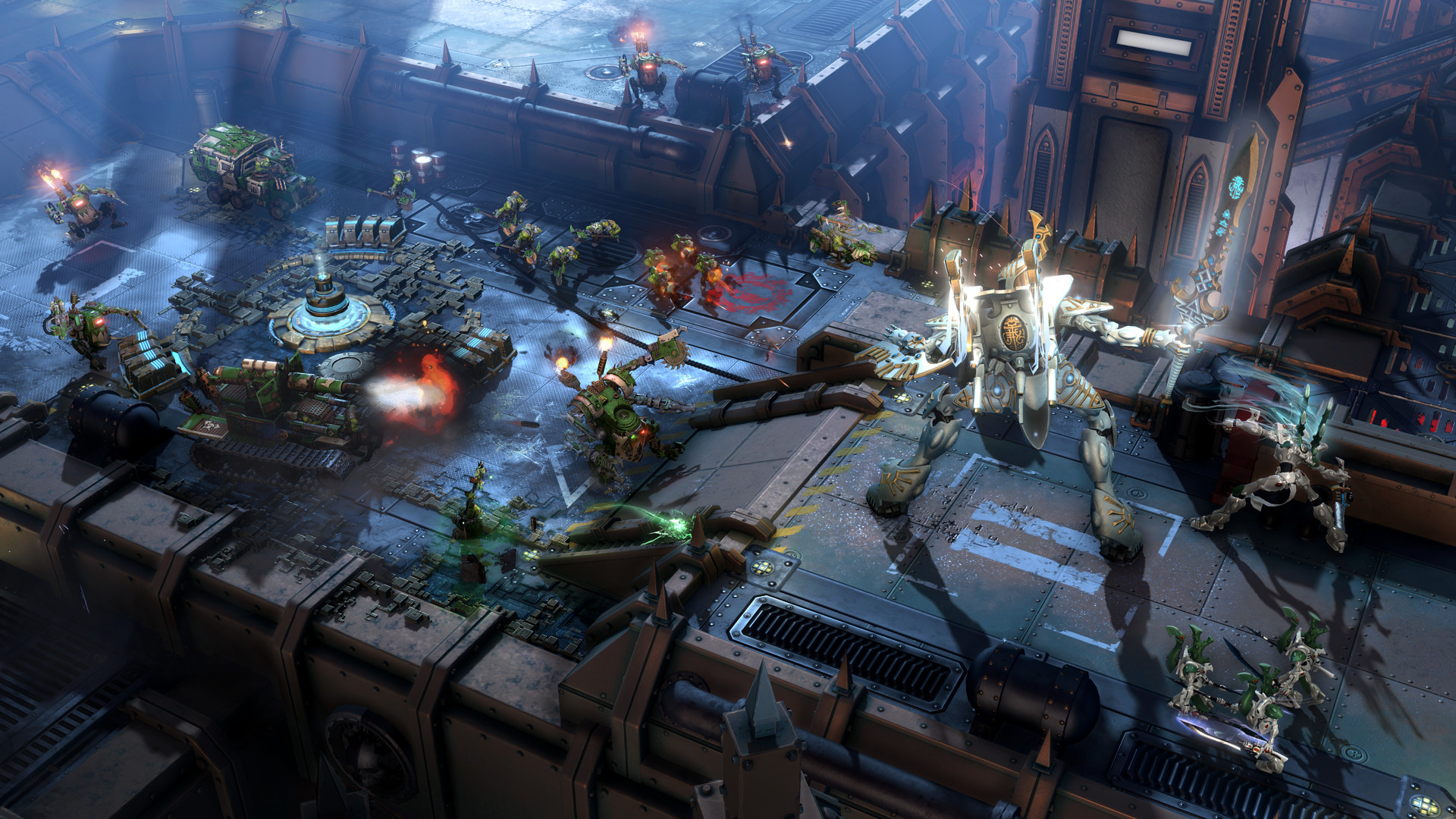
Final Thoughts
So, should you get Warhammer 40,000: Dawn of War III? If you are a fan of Dawn of War, you likely will not be disappointed in the latest entry in the series. If you are new to the series, you could pick up Dawn of War III and not really be missing anything important story wise that would impede your enjoyment of the game. Since this review was written when the game had just come out, the game has received a number of updates. At least three decent sized ones within the span of a week! It did cause several rewrites of this review so I can say that is both a blessing and a curse. It’s a curse because I had to carve out huge sections of this review that were no longer accurate and in time some portions of this review may become dated (fingers crossed that in-mission auto-save becomes a thing), but in general it is a great sign that the Developer didn’t just throw the game out the door to be ignored when it clawed at the door trying to get back in. As it stands the game is being beaten up a bit in the user review department because of all the launch bugs. Not to worry! If the development and patches keep up this pace for a while, I am pretty sure it is safe for me to say to go ahead and take their complaints with a grain of salt. Odds are their issues have long been patched or fixed. New issues may have even been added and also fixed in the time since they wrote their review. A great example is the fact that I spent a paragraph complaining about my units falling through the ground in places causing squads to be unable to move since one of their units was trapped underground. That was fixed the day after I wrote it! Another is the fact the achievements were not crediting properly, that appears to have been resolved as well. All in all, Dawn of War III, in its current state, is a Save!
For the Emperor!

